We sincerely hope that you thoroughly enjoy this article about 5 Astounding Sea Snails. Many people dismiss these creatures as uninteresting or unappealing. But in reality, nothing could be further from the truth, where these amazing animals are concerned.
Notably, these amazing denizens of the depths have been around for an incredible span of time. Their earliest known ancestors originated around 500 million years ago. The species we see today represent the end product of that evolution, and thus deserve appreciation.
Orange Peel Doris
Orange Peel Doris Facts
- Leading off this article about 5 Astounding Sea Snails is is the dazzling, and distinctive-looking species appropriately named the Orange Peel Doris.
- This unique creature, equal parts cute and bizarre in appearance, bears the common name for understandable reasons. The distinctive term for it’s certainly more easily pronounced than the scientific name. That’s the tongue-twisting Acanthodoris lutea.
- Regardless of which term one uses to refer to it, the animal remains a remarkable species of gastropod mollusk. The American malacologist, Frank McFarland, made the first official scientific recognition of it as a separate and distinct species, in 1925.
- The common name understandably derives from its colorful appearance. Due to that, it’s considered by many to be among the most noticeable of the known nudibranchs. To date, researchers recognize more than 3,000 types of nudibranch, or sea slug.
- For the moment, this marvel of Nature and evolution holds a decidedly favorable status, compared to some of its relatives. Presently, its numbers appear to be stable and sufficient. This further holds true throughout the entirety of its known natural range.
- The IUCN, therefore, has no listing for it on the organization’s Red List. It nevertheless could face several potential threats in the future, given the rapidly changing conditions of the oceans. Both habitat loss and climate change could one day threaten it.
Orange Peel Doris Physical Description
The Dazzling Orange-Peel Doris clearly impresses those who encounter it for reasons having nothing to do with size. In point of fact, it’s moderate-sized. It’s clearly not the largest of its kind, by far. That distinction’s held by the remarkable Black Sea Hare.
In terms of relative size, it’s respectably average-sized, though. Mature adults typically attain a length measuring roughly 1.18 in (30 mm). The overall body shape remains relatively elongated. This usually changes as it moves, however, extending and contracting.
In most specimens, the head’s only distinguishable by the presence of two horn-shaped protuberances. These develop equally spaced atop the had of the creature. Both present the same overall color as the rest of the body, except for a dark patch at the top.
Being hermaphroditic in nature, the Orange-Peel Doris evolved differently than many animals. Due to this, it does not display the physiological characteristic of sexual dimorphism. This tends to be true of most creatures possessing this characteristic.
Its most noticeable characteristic, however, clearly remains its coloring. The entire body mainly presents a bright orange color, except for the tips of the two horn-shaped structures. It also manifests a smattering of small yellow specks across the entire body.
- Kingdom: Animalia
- Phylum: Mollusca
- Class: Gastropoda
- Order: Nudibranchia
- Family: Onchidorididae
- Genus: Acanthodoris
- Species: A. Lutea
Orange Peel Doris Distribution, Habitat, and Ecology
Unfortunately, the amazing Orange-Peel Doris possesses a highly restricted habitat range. Currently, the animal’s only known to live within a relatively tiny range of the Eastern Pacific Ocean. That zone of habitation further remains extremely restricted in nature.
The nudibranch only appears to live along portions of the west coast of the continent of North America. More precisely, its known range extends from Cape Arago, in Oregon, in the United States, to northern regions of Baja California, in the country of Mexico.
Its own nature also limits the extent of the area in which it appears. This holds true because the mollusk only lives in very specific ecosystems. Firstly, these consist of the subtidal and intertidal zones. But the creature also requires the shores to be rocky in nature.
The gastropod also evolved a highly specialized diet, like many of its relatives. This particular nudibranch feeds exclusively on tiny creatures known as bryozoans. Even more specifically, it only consumes those bryozoans within a single genus, that of Alcyonidium.
This, however, provides the Orange-Peel Doris with perhaps its only defense against predators. The particular group of bryozoans it feeds on contain specialized chemicals. Taking these into its own body, causes the flesh of the nudibranch to become toxic.
When mating, two individuals decide which will play the role of the male and female, being hermaphrodites. After mating, eggs become deposited on the stratum. After hatching, the young emerge as planktonic, slowly changing to their eventual adult forms.
Queen Conch
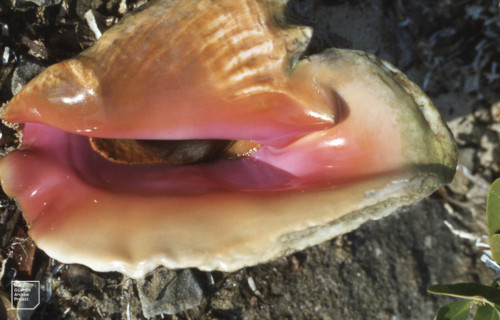
CCL: https://bit.ly/2UQRfM4
Queen Conch Facts
- Next up in this listing of 5 Astounding Sea Snails is the beautiful species descriptively known as the Queen Conch.
- The fascinating term perfectly serves as the currently accepted common name of a particularly beautiful variety of sea snail. The name of the animal itself, however, remains a source of some confusion, and even a small amount of controversy.
- That’s due to the fact that the mollusk has gone by other scientific names in the past. The original official name for the creature was Strombus gigas. But, that later changed to the distinctive term Lobatus gigas. Now, though, it stands at Aliger gigas.
- Its first official recognition as a distinct species occurred in the year 1758. This took place at the hands of the renowned Swedish naturalist Carl Linnaeus. His choice of name for the creature held true for more than 200 years, until modern times.
- Quite fortunately, for the moment, the Queen Conch does not appear on the IUCN Red List of Threatened Species. This situation exists because it appears to still have a sufficient population base. That, however, could easily change in the future.
- That’s due to the fact that many experts consider it to be facing multiple threats to its safety as a species. One of these consists of over fishing through commercial activities. Yet another remains habitat loss. But its greatest threat remains climate change.
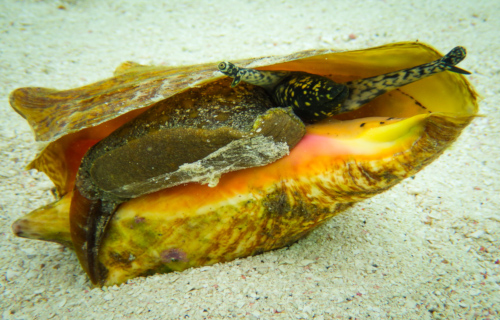
CCL: https://bit.ly/30RN6LI
Queen Conch Physical Description
The actual body of the amazing Queen Conch attains a highly respectable size, compared to related creatures. The overall length, though, varies significantly, even among individuals, as it moves. This obviously makes precise measurements difficult to acquire.
The body has some distinct physical characteristics, however. For one, the soft body possesses a head provided with an elongated snout. This also serves as the home of two eyestalks. The animal displays two tentacles, and a single, large part known as the foot.
But the shell of the fascinating Queen Conch represents its most fascinating feature. This varies in size, since it grows as the animal itself does. The shells of adults range from 5.9 – 12.2 in (15 – 31 cm) in length. These also reach an average weight of about 5 lb (2.3 kg).
This portion of the impressive gastropod also has a beautiful appearance. It generally grows in a strong spiral shape. A mature specimen usually displays 9 – 11 whorls. The exterior typically presents shades of tan or brown. But the inside appears a glossy orange or pink.
- Kingdom: Animalia
- Phylum: Mollusca
- Class: Gastropoda
- Order: Littorinimorpha
- Family: Strombidae
- Genus: Aliger
- Species: A. gigas
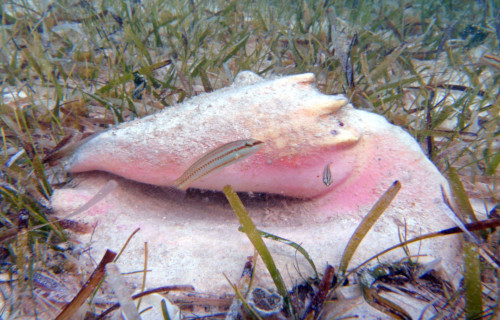
CCL: https://bit.ly/2C89RjY
Queen Conch Distribution, Habitat, and Ecology
The magnificent Queen Conch inhabits a comparatively broad swathe of the world’s oceans. That area’s quite complicated, though. More specifically, the northern edge of this range includes the Western Atlantic coasts of both North America and Central America.
Meanwhile, the southern edge of its range includes the Caribbean tropical area. Unconfirmed reports also extend that range to the northeastern shores of Brazil, in South America. This zone of habitation also includes numerous islands where it appears.
Wherever individuals appear within this range though, these have specific requirements for their choice of habitat. Specimens typically reside in warm shallow water. This region usually consists of regions with a depth measuring no more than 70 ft (21 m).
The stunning Queen Conch also evolved as benthic in nature, meaning it lives on the ocean floor. Most commonly, it prefers to inhabit such regions as areas of seagrass beds. Yet it also often appears among coral reefs and various sandy stretches where these are unavailable.
While some related creatures evolved as hermaphroditic in nature, that’s not the case for this one. This member of its Family possesses two sexes, and reproduces via internal fertilization. After mating, the female lays as many as an astounding 300,000 eggs.
Flamingo Tongue Snail
Flamingo Tongue Snail Facts
- The third entry into this compendium of 5 Astounding Sea Snails is the remarkable creature known as the Flamingo Tongue Snail.
- The highly descriptive term excellently serves as the accepted common name for a remarkable variety of sea snail. This marvel of Nature also goes by another name, however. Among researchers, it’s known by the name Cyphoma gibbosum.
- Regardless of which name one uses, it remains a most fascinating creature. It also represents one of only eleven recognized species within its genus. Yet, even among its brethren this fabulous marine gastropod mollusk stands out from the crowd.
- That’s partly due to the fact that it’s one of the most colorful of them all. This wondrous animal also distinguishes itself in yet another manner. That’s because it remains the most numerous of its various relatives present within its native range.
- Sadly, though, this awesome creature once existed in much greater numbers. But, human tourism vastly reduced its population base throughout most of its natural territory. Divers and snorkelers often take the seemingly empty shells.
- For the moment, though, the Flamingo Tongue Snail does not appear on the IUCN Red List. Many experts nonetheless consider it to be at risk. While it still faces the dangers posed by tourists, its major threats now consist of habitat loss and climate change.
Flamingo Tongue Snail Physical Description
Perhaps most notably, describing the appearance of the Flamingo Tongue Snail is quite complicated. That’s due to the fact that its physical appearance varies significantly between when it is still alive, and immediately after its passing. That’s due to a unique characteristic.
Firstly, it itself remains a physically small specimen. In fact, the maximum measured body length only equals 1.7 in (4.3 cm). But an average length for the body is much smaller. The shape of the remarkable shell itself also typically develops as elongated in structure.
Secondly, while still living, the species generally displays a brilliant orange and yellow. It also often displays random black markings. Furthermore, these colors actually come from live tissue covering the shell itself. In this respect, the Flamingo Tongue Snail truly stands apart.
Thirdly, this covering can be withdrawn at will, but that rarely occurs while the creature lives. When the incredible creature dies, the colors fade. Finally, the smooth underside of the astonishing shell most commonly displays combinations of shades of pink and white.
- Kingdom: Animalia
- Phylum: Mollusca
- Class: Gastropoda
- Order: Neotaenioglossa
- Family: Ovulidae
- Genus: Cyphoma
- Species: C. gibbosum
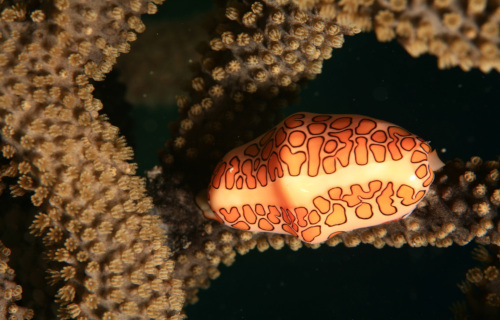
CCL: https://bit.ly/2YUg5fl
Flamingo Tongue Snail Distribution, Habitat, and Ecology
The Flamingo Tongue Snail inhabits a moderately broad range of the marine waters of the world. The exact area in which it appears likely comes as no great surprise, however. More precisely, it primarily lives in the warmer waters of the western Atlantic Ocean.
This amazing gastropod appears in a region that begins off the northern coast of the country of Brazil, in South America. From there, this marvelous denizen of the ocean appears as far north as the coast of the state of North Carolina, in the United States, in North America.
The range of the awesome gastropod also extends westward as well. Though populations remain smaller, it appears in the waters around Bermuda and the Lesser Antilles. Scattered specimens also appear in the Gulf of Mexico and the Caribbean Sea.
Throughout the entirety of its range, the gorgeous mollusk remains consistent in its choice of habitat. For one thing, the tiny beauty only lives in very shallow areas. In point of fact, the maximum depth at which any specimen has ever been spotted only measured 95 ft (29 m).
The diet of the aptly-named Flamingo Tongue Snail remains consistent with related species. The animal lives almost solely among coral reefs and feeds exclusively upon the flesh of soft coral. The species also evolved an almost symbiotic relationship with this life form.
The perfectly evolved creature of the sea feeds by scraping the fresh polyps off of the coral, finding hem easy prey. As most things in nature, this process is virtually perfect. The process does not harm the original coral, which subsequently regrows more polyps.
Lettuce Sea Slug
Lettuce Sea Slug Facts
- Appearing next in this compendium of 5 Astounding Sea Snails comes the incredible creature understandably known as the Lettuce Sea Slug.
- The humorous term for the animal refers to a specific, and visually distinctive, marine gastropod mollusk. That common name’s easier to pronounce than its scientific counterpart, though. Its technical name’s the comparatively easy Elysia crispata.
- It’s also borne many other, earlier names. The Swedish biologist, Otto Andreas Lowson Mörch, specifically a malacologist, made the first known formal recognition of it. This first acknowledgment of the creature as a distinct species occurred in 1863.
- Its slightly amusing common name understandably derives from its remarkable physical appearance. Though it closely resembles a nudibranch, it’s something different. It’s technically classified as a sacoglossan, a somewhat distant relative.
- For the moment, the IUCN has no listing for the awesome Lettuce Sea Slug. Any such listing would appear on the organizations’ Red List of Threatened Species. This fortunate situation occurs partly due to its range of distribution, among other factors.
- The remarkable creature nevertheless faces the same threats as virtually all species on earth. Habitat loss naturally ranks as one such potential threat. Its greatest danger, however, no doubt comes from another source. That’s the peril of climate change.
Lettuce Sea Slug Physical Description
Though it easily impresses those who view it, the fabulous Lettuce Sea Slug does not do so due to sheer size. That’s because it’s a relatively diminutive variety. Being hermaphroditic in nature, the principle of sexual dimorphism doesn’t apply to the creature, though.
An exceptional size for mature individuals, however, equals roughly 2 in (5 cm). A larger-than-average body width for adult specimens, meanwhile, only measures about 1.2 in (3 cm). As a general principle, though, most individuals remain much smaller than this.
The most notable physical attribute of the fascinating Lettuce Sea Slug remains obvious. That’s the intricate protrusions covering its body, known as parapodia. These create the impression, to many, that the creature possesses an external covering of lettuce.
These further extend that comparison due to the most commonly displayed color, that of light green. These sometimes vary in color, however. In point of fact, these sometimes include shades of pale white or blue. Faint yellow or red lines also occasionally manifest.
- Kingdom: Animalia
- Phylum: Mollusca
- Class: Gastropoda
- Order: Sacoglossa
- Family: Elysiidae
- Genus: Elysia
- Species: E. crispata
Lettuce Sea Slug Distribution, Habitat, and Ecology
The gorgeous and unique Lettuce Sea Slug inhabits a comparatively wide section of the marine regions of the world. Sadly, though, that’s still a fairly small rang, compared to the size of the world’s waters. It lives in the tropical parts of the Caribbean and Western Atlantic.
More precisely, that zone of habitation extends from the area around Bermuda, to the Florida Keys, in the United States, in North America. Even there, though, its range remains further limited. That’s true since it only lives near coastal and tropical reefs.
This specific environment’s where it makes its home almost exclusively. It further does so at extremely shallow depths. The vast majority of individuals, in fact, appear at depths of between 1.6 – 39.4 ft (0.5 – 12 m). It also needs the water to be clear.
This amazing creation of Nature and evolution further has a highly specialized diet. It evolved as what’s known as a herbivorous suctorial feeder. This means that it consumes the sap of certain algae, usually green. It does not, however, digest all parts of it.
The hermaphroditic Lettuce Sea Slug is also highly prolific in nature. Most of its relatives lay between 30 – 500 eggs after mating. This species, however, lays an average of 1,020 eggs with each clutch. This provides it with a definite evolutionary advantage.
Beyond this data, researchers know very little about the remarkable Lettuce Sea Slug. That lamentable lack of information extends to such aspects as its predators and its role in the local ecosystem. Even its precise lifespan remains undetermined at this time.
Giant Triton
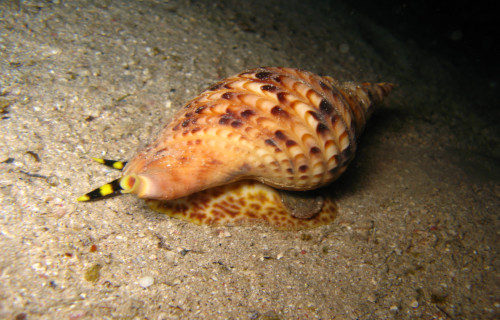
CCL: https://bit.ly/37zjp3f
Giant Triton Facts
- The fifth and final creature appearing in this article about 5 Astounding Sea Snails is the awesome Giant Triton.
- The fully deserved term for it serves as one of the common names for a particularly impressive variety of sea snail. However, this marvel of Nature also goes by another, similar common name. That’s the equally fitting name of the Triton’s Trumpet.
- Among professional researchers, though, this remarkable gastropod holds yet another title. That happens to be the somewhat hard to pronounce Charonia tritonis. But, by whatever label one uses, it’s an amazing member of its genus.
- This wondrous creature also holds a status apart from many of its brethren. That’s because, unlike many related species, it appears to be maintaining a sufficiently stable population base for the moment. This fortunate situation extends throughout its range.
- As a result of this, the IUCN currently has no listing for the beautiful Giant Triton. Any such listing would appear on the organization’s Red List of Threatened Species. The impressive gastropod does, however, presently appear in the Catalogue of Life.
- It nonetheless remains considered to be at some potential risk, in the minds of many researchers. This consideration partly occurs due to the dangers of habitat loss. But, it’s greatest threat, like most species, comes in the form of ongoing climate change.
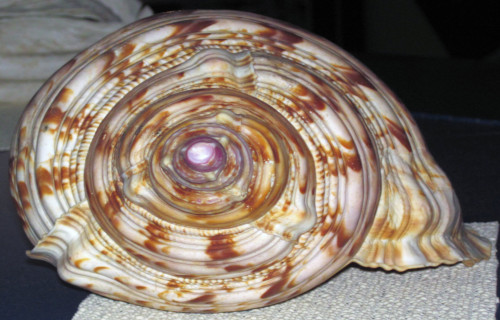
CCL: https://bit.ly/2zHvoiQ
Giant Triton Physical Description
The magnificent Giant Triton easily earns its distinctive common name. That’s due to the fact that it ranks as one of the largest species of mollusk within its native range. In point of fact, this remarkable ocean creature often attains a length of as much as 24 in (60 in).
Yet, the sheer size of its amazing shell isn’t the only visually impressive characteristic of its protective covering. That holds true due to the fascinating design of this natural defensive structure. Evolution blessed it with a marvelous spindle-shaped appearance.
The exact coloring of this also varies quite significantly between individual specimens of the unique animal. The basic pattern consists of varying shades of white and a yellowish-brown. The precise combination, however, remains unique to each example of Giant Triton.
- Kingdom: Animalia
- Phylum: Mollusca
- Class: Gastropoda
- Order: Littorinimorpha
- Family: Charoniidae
- Genus: Charonia
- Species: C. tritonis
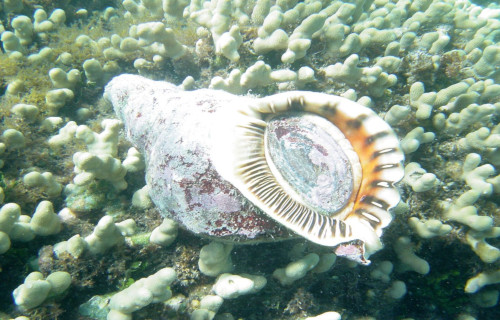
Photo: Dr. Dwayne Meadows, NOAA
CCL: https://bit.ly/3hsMfHb
Giant Triton Distribution, Habitat, and Ecology
The breathtaking Giant Triton also stands out from similar gastropods in terms of its territory. Thus, it holds another advantage over related species. That’s true because of the fact that this member of its amazing genus inhabits a somewhat broad range of the world.
In point of fact, the truly mesmerizing mollusk exists in many of the temperate and tropical waters throughout the world. Yet, it appears to be the most prevalent in the Indo-Pacific region. This presence even includes the region of the globe known as the Red Sea.
Although its range of habitation is relatively extensive, its choice of habitat remains quite restricted. Like many of its kind, the species primarily prefers to make its home in areas of coral reef. Nonetheless, individuals will also occasionally move into open areas.
The incredible Giant Triton also ranks as a highly active predator. Its primary prey usually consists principally of other mollusks and starfish. It remains one of the few species known to actively prey upon the large and highly venomous Crown-of-thorns starfish.
This fascinating species also evolved remarkable strategies and tools for its feeding efforts. It will frequently utilize its file-like radula to saw open the protective armor of its prey. Then it uses its saliva, which contains a paralytic agent, to immobilize the hapless victim.
Unlike most similar species of gastropod, this one did not evolve as a hermaphrodite. It reproduces via sexual means, with the newly born larvae being planktonic in nature. These float on the ocean currents for about three months before settling on the ocean floor.
5 Astounding Sea Snails

CCL: https://bit.ly/2UQRfM4
We sincerely hope that you have greatly appreciated this article about 5 Astounding Sea Snails. Now that you know a little more than before, perhaps you realize that these magnificent creatures are as deserving of respect and appreciation as any other.
Sadly, however, some of them now find themselves in various stages of peril. It remains up to each and every one of us to do all that we can to protect them. Nature designed these 5 Astounding Sea Snails for a reason, even if we cannot always see what that is.
Check out our other articles on 4 Amazing North American Deserts, 6 Breathtaking Raptors, Earth’s Many Magnificent Bees, 5 Rare Mind-Blowing Cloud Types

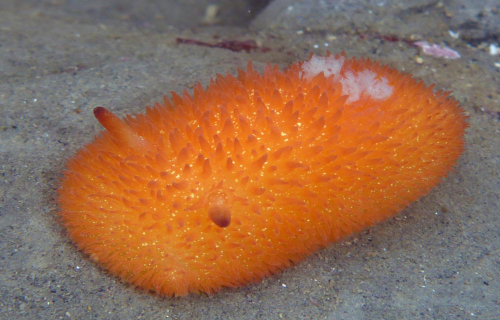
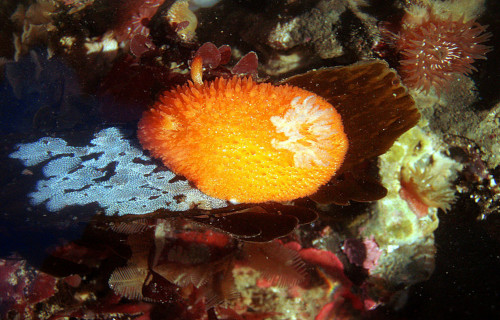
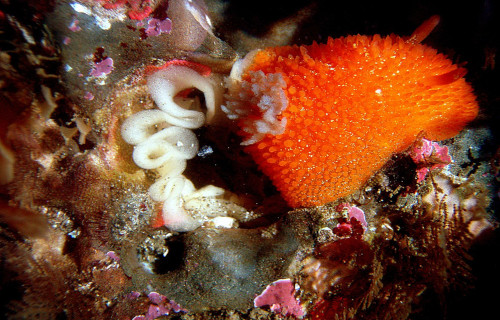
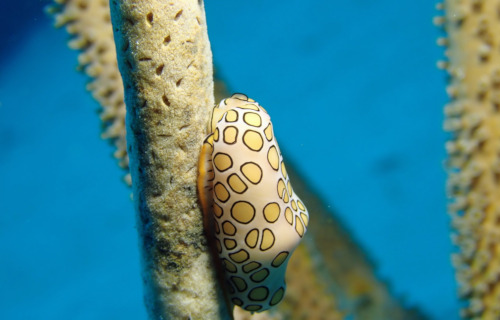
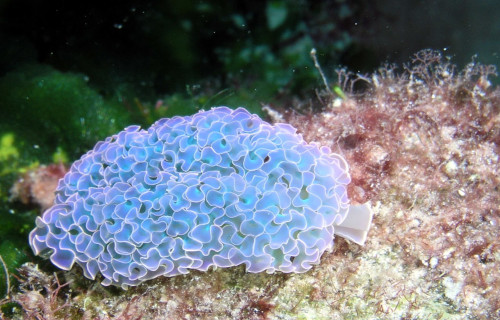
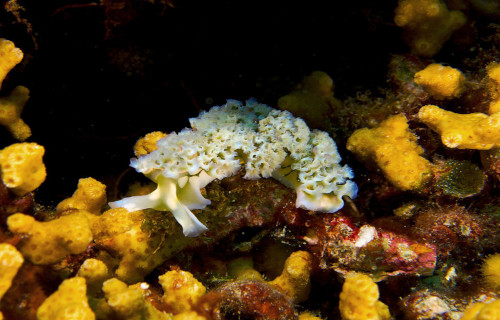
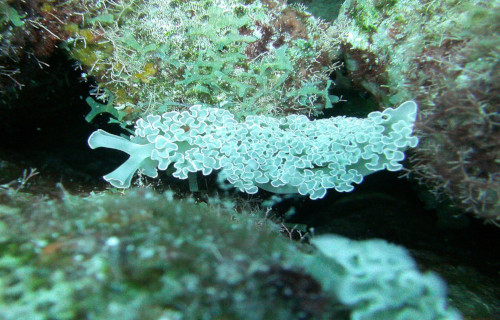









Leave a Reply